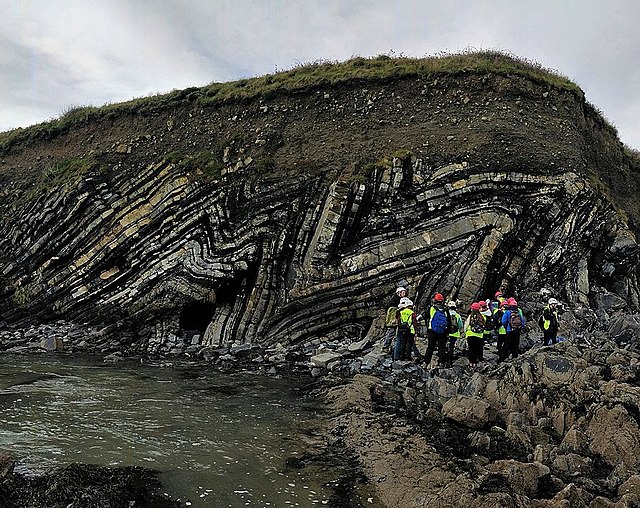In structural geology, a fold is a stack of originally planar surfaces, such as sedimentary strata, that are bent or curved ("folded") during permanent deformation. Folds in rocks vary in size from microscopic crinkles to mountain-sized folds. They occur as single isolated folds or in periodic sets. Synsedimentary folds are those formed during sedimentary deposition.
Folds of alternate layers of limestone and chert occur in Greece. The limestone and chert were originally deposited as flat layers on the floor of a deep sea basin. These folds were produced by Alpine deformation.
Kink band folds in the Permian of New Mexico, USA
Rainbow Basin syncline in the Barstow Formation near Barstow, California
Chevron folds, Ireland
Structural geology is the study of the three-dimensional distribution of rock units with respect to their deformational histories. The primary goal of structural geology is to use measurements of present-day rock geometries to uncover information about the history of deformation (strain) in the rocks, and ultimately, to understand the stress field that resulted in the observed strain and geometries. This understanding of the dynamics of the stress field can be linked to important events in the geologic past; a common goal is to understand the structural evolution of a particular area with respect to regionally widespread patterns of rock deformation due to plate tectonics.
Originally horizontal strata deformed due to stress




